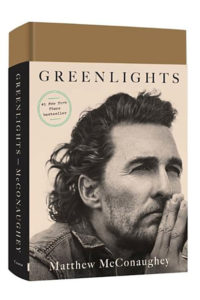One risk management solution you can do is to set your excess dollars aside and put them into an 831(b). This money is to ensure for risks that are uninsurable and unforeseen types of events. Especially now with the pandemic, businesses need to be smart with their insurance. You don’t know what can happen. Someone can fall ill and it can take a huge toll on your business. Join Matt Fore as he talks to Clay Ogden about his risk management solutions as an 831(b) administrator. Clay is the National Business Development Manager of Strategic Risk Alternatives. Learn what an 831(b) does and how you can start the plan. Start insuring your business from all the unknown risks today.
Watch the episode here
Listen to the podcast here
Risk Management Solutions With Clay Ogden
We have Clay Ogden from Strategic Risk Alternatives. Strategic Risk Alternatives or SRA specializes in 831(b) plans for tax deferral now to address tomorrow’s risk. It positions its clients at the forefront of their industry, allowing them to weather any storm typically not covered by insurance. Clay can easily be described as the ace on the SRA team. I’m super excited to have him here. Clay, welcome to the show.
Thanks for having me.
We like to start with the difficult questions here. What’s your favorite ice cream?
I tried a new one. 2020 allowed me to try some new things. It’s gooey butter cake ice cream.
That sounds delicious. Where did you find that?
It vaulted at the top of the list immediately. There’s an ice cream place here about 15 to 20 minutes from my house. It opened up in 2020. It’s called Blacksmith. It’s amazing.
What makes it gooey? I get the butter but is it chocolate or caramel?
It’s a cream cheese-based ice cream and they have chunks of gooey butter cake in there. It’s so good. It’s not healthy but it’s amazing.

Risk Management: The 831(b) tax code started in 1986. Congress brought this forward to help a lot of the people who were struggling with their insurance. This allowed a business owner to set aside up to 1.2 million per year of funds.
This is the controversial topic that we typically cover. Do you prefer a bowl or cone?
A good waffle cone.
I like it. Tell our readers. What’s the scoop? What do you do?
At SRA, we are 831(b) administrators. Honestly, we work with business owners in any and every industry you can think of, allowing them to take excess profits and revenues out of their business and set those dollars aside into what we form for them as an 831(b). It’s a separate company and entity. They’re able to set these dollars aside and deduct them from their business when they do so to ensure for risks that are uninsurable, uncommon and unforeseen types of events.
A lot of what we’ve seen over the last couple of years with the pandemic has hugely validated these programs because traditional insurance hasn’t covered a lot of the business interruptions, supply chain interruptions, brand reputation damages and political risk events. All those things ultimately fall to the business owner to bear the brunt of and they own that on their balance sheet.
If there’s a way to, in good times, take a little bit off the top, set it aside for these things that can come up and have those reserves at their disposal to use to make those things a little blip on the radar, that’s what these programs are designed to do. It’s to become a risk management tool first and foremost, hopefully creating some tax advantages while doing so.
That was a good high level. I want to dig in here. I got to say that the more I study about insurance, it’s a beauty but also, there are some Ts and Cs in all of our insurance policies that we’re not ready for. This sounds like a perfect way to plug some of those holes. Let’s start at the beginning. Is the 831(b) a tax code? I’ve also heard it called captive insurance. How is that different from that?
It’s the same thing. Captive insurance uses the 831(b). The 831(b) tax code started in 1986. Congress brought this forward to help a lot of the people that were struggling with their insurance. There was an insurance crisis in the mid to late ‘80s. A lot of people couldn’t get insurance for different items. One of the main things that helped was farmers subsidizing crop insurance. They were unable to buy crop insurance.
Congress brought forth the 831(b). It allowed a business owner to take and set aside up to $1.2 million per year of funds to manage risks. In 2016, all of this was changed and there were a couple of revisions. 1 of 2 things that changed was the amount that could be set aside. It moved. Congress raised it from $1.2 million to $2.2 million per year with an inflation record on it. In 2022, it sits at 2.45 million annually.
The second thing that they changed was kids and grandkids could no longer own any part of the 831(b) if they don’t own a piece of the operating company. It was a creative, strategic and abusive scenario that they tried to clean up but a lot of people would put kids and grandkids on as ownership and move funds from their business to their 831(b) and bypass the estate tax. It became an amazing planning tool but the IRS finally said, “No more of that.” Those are the two things that changed over the years. It has been validated in a major way because lots of business owners would no longer exist if they didn’t have any 831(b) to turn to over the last few years.
I know enough about this topic to sound smart to somebody that knows nothing or has never heard of this but is stupid. I want to ask a couple of questions here. One of them is the insurance crisis. Do you have any context around why was there an insurance crisis? Was that due to some of the inflation that we were seeing out of the late ‘70s? What was going on then?
If anyone goes to Google and looks up the 1980s insurance crisis, they’re going to find tons of different scenarios of why insurance companies were raising premiums. They were restricting what they were going to cover or they were not covering it at all anymore. This was a pivot to allowing small to mid-market business owners to allow them to set dollars aside. This is a piece of the tax code that’s been used by Fortune 500 companies and large enterprises for a long time.
The auto industries honestly used this probably longer and more effectively than anybody else because if you go and buy a vehicle, they sell you a service contract and a warranty. They take all of those revenues and set them inside their 831(b). They then use those dollars to manage claims on those service contracts and warranties. Whatever is not used, they’re then borrowing from or taking dividends from to oftentimes go by the flooring that sits on their lot rather than paying a third party 10% or 12% to do that for them. It becomes a much more efficient way of running their business while managing their claims and risks.
When you say setting aside money, are they putting it into your company or an escrow account? Are they setting up a separate company? What does that look like?
When a client owns their 831(b), as the admin, we’re going to form that entity for them. If it is a C corp, we’re going to form it. We’re going to get the corporate documents, EINs, shared certificates and everything for them. We’re then going to manage it and maintain it for them. We’re going to do the returns and the annual filings but those funds will be paid from their business to our direct writer and then end up in their 831(b).
When it’s in the policy, I’m assuming it’s structured something like a whole life policy where it’s going to get growth. What does that look like when it’s in that policy then?

Risk Management: You can start exploring these plans when you have a net of about 75,000 a year in premiums or more. The better that you put in, sometimes the better it looks and the better it works.
A lot of the time when policies are in effect, you can invest in liquid-type assets. Those could be stocks, bonds, mutual funds or ETFs. Those are anything that can be liquidated within 2 to 3 business days. All the policies are going to be a one-year calendar year or fiscal year policy. At the expiration of that, any of those funds that you contributed in year one and didn’t have any claims on become surplus sitting inside your 831(b) and are still being deferred.
You can use those dollars for a potential shareholder loan, a dividend or simply leave it inside the 831(b) and invest it. Clients can go into more illiquid long-term investments after that first year and then each year, the same progression would follow. In year one while the policies are in place, it does need to be liquid and accessible in case there’s a potential claim.
Let me try to walk through an example to see if I’m capturing this. I’m a car manufacturer. I want to do an extended warranty and I get $100,000 from that. I put $100,000 into the 831(b). If no one calls and gets a claim, I can use that surplus to move it into liquid assets like stocks and bonds or illiquid assets like real estate or I can take a loan against the cash value of that to go put it wherever I need to go put it.
Let’s say a business owner does $2 million to $3 million in gross revenues. They want to set aside 10% of that. Let’s say it’s $300,000. Once those funds go into their 831(b) and that first year of policies expires, they have the ability to loan up to 65% of that and borrow it to them as the shareholder. They can also take a dividend for as little up to the entire amount or have the option to leave it inside the 831(b) if they’re like, “I didn’t want it or need it now.”
If it was used for claims, that number comes down. Let’s assume that there’s $250,000 in there at the end of that first year. They have their options to either invest it within there or take a loan or a dividend. We’ve had clients that have gone and bought a rental property, Airbnb, a piece of land to build a new office or expanded their business in a time when they thought it was a good opportunity because they had the reserve set aside to do so at that point in time.
If I have that theoretical $100,000 in there, nobody files a claim and I decided to go take a 65% loan on it and buy a rental property, can I then still use the remaining 45% or 35% to pay for the claims if they happen? If the policy is done after a year, I wouldn’t be able to do that?
The next year, if and when new premiums are put in, those premiums are going to be at risk for claims purposes. The first year of premiums that you put in is no longer at risk. They’re surplus for you to use whether it’s investing within the 831(b) dividends, loans or whatever that might be but they are not going to be used particularly for claims happening then. That’ll be what year two’s premiums are for.
You’re starting a whole new business at that point. As long as there are no theoretical claims against it, then you can continue to invest and do whatever you need to do. You mentioned 10%. Is there a maximum amount of revenue that you can put in there? What are the legal guidelines around that?
That’s the interesting thing about it. There are legal guidelines. A lot of the abuses that we’ve seen go on in this world are clients that have put aside 35% to 70% of their gross revenue. They go to tax court and wonder why the IRS has an issue with that. They’re not managing any risk at that point in time. They’re just sheltering dollars. Our general rule of thumb in-house is 10% to 15% of gross revenue.
When this piece of the tax code started, farmers were able to set aside 10% of revenue for subsidized crop insurance. The government would pitch in an additional 10% for that 10% to 20% of gross revenue. We always try to keep our clients in that window. We try to take a very conservative stance on it because we love what we do. We’re trying to keep ourselves and our clients out of harm’s way by using this tax code to manage risk. If they get some tax benefits out of it, that’s awesome. If they don’t, that’s what those dollars are set aside for us to manage risk.
Am I reducing my taxable income by moving money in there? For example, if I have $1 million of gross revenue then I put $200,000 or 20% into this 831(b) plan, I have $800,000 of taxable revenue at that point. Is that how this works?
Yeah. We have two sets of clients, the business owner themselves and advisers and CPAs. Anyone who works with business owners is our two sets of clients. Anytime the premiums are paid, the premiums are going to be deductible to the entity that’s contributing those funds in the year that they contribute them.
For example, in my real estate portfolio, I might only be doing $100,000 of income. Most of that has some native tax advantages through owning real estate in general but let’s say I have an Amazon business where I’m making $100,000 in revenue. At what point does it make sense to start exploring these plans from a cost perspective?
I would say if you have a net of any fees on our side. If a client’s going to be setting aside $75,000 in premium or more, sometimes it’s $60,000 depending on where they’re at in the country or what state they live. The bigger that you put in, sometimes the better it looks and the better it works. At the end of the day, about $75,000 in premium makes sense from a number standpoint.
I’m reducing my taxable income by $75,000 on the business at that point. I can then take that $75,000. As long as the insurable risk that I’m ensuring against doesn’t happen, I can take that and continue to invest or pull it out as a dividend. I’m sure there is some guidance like tests and things like that that the IRS looks at. I could see where this could be abused very quickly. Beyond the 20%, are there any other tests that we can run to make sure that we’re remaining compliant with the IRS in this?
That’s why we have our in-house rules of that 10% to 15% window of gross revenues. The other important aspect on our side, the 831(b) admin, is making sure that we follow the four-part test. Anyone in our industry that doesn’t talk about this, should. It comes down to making sure that you have a proper transfer of risk and proper distribution of risk. The third one would be making sure that you have fortuitous types of risks that you’re funding for. You cannot fund ordinary business risks here. It’s got to be things that happen by chance.

Risk Management: Make sure you have a proper transfer of risk, make sure that you have a proper distribution of risk, make sure that you have fortuitous types of risks, and make sure you’re following the principles of insurance.
The fourth one would be making sure that you’re following the principles of insurance. You have properly drafted policies. You receive policies in general. Unfortunately, a lot of people in this space give you a piece of paper that says what’s covered or what types of coverages. They don’t give you any policy language. You have to have the proper investment of the reserves and make sure that you’re utilizing the law of large numbers. These are all of the things that we do on our side but are the crux of making sure that this thing works.
When you talk about the principles of insurance, it means making sure that there is a policy. That’s not like, “We insure against the pandemic,” and that’s it. You have a detailed policy. Do you all write those policies or help write policies like that for your client?
Yeah. We have different legal teams. We work with different attorneys that are specialized in writing policy language. We have policies for custom warranties, supply chain interruptions and cybersecurity issues. A lot of times, we see things with a professional liability or maybe the loss of a key employee due to an accident or illness.
There’s also brand reputation and damages in any government agency audit. All of these things can be devastating to a business if they happen or happen at the wrong time. The political risks that we’ve seen over the last couple of years with government bodies deciding who’s an essential and non-essential business have been crippling to a lot of industries. Those are all scenarios or policies that we issue to our clients to help them mitigate and manage those potential issues.
What does a transfer of risk mean? Are you transferring it to the 831(b) plan? Help us understand that a little bit more.
Think that you’ve got three bubbles. You’ve got your operating company or companies, the direct writer that we own and operate and then your 831(b). Funds are going to be sent to our direct writer and then once we receive those funds, we’re sending them to the client’s 831(b). That transfer risk takes place when they send those funds to our direct writer. They have no financial interest in transferring it much like they would if they were paying premiums to state farms, travelers or whomever.
If there’s not that middle entity, the IRS would come in and say, “You haven’t properly transferred this risk because you’re a shareholder here and there.”
Potentially. Why we structured it the way we did was to mirror traditional insurance to make it as clean and explainable as possible.
Keeping specific names and figures out of it, do you have any examples of your clients that have used this and seen a great benefit that maybe you could talk through at a high level?
We had a client file a claim because he was diagnosed with stage four cancer. He filed a claim for the loss of a key employee to an accident or illness. He was able to pull those funds back into his business to find someone to replace him for about a 6 to 8-month window while he was out and try and figure out what was going to happen next. He produced about 70% of the revenue for his company. The company would have taken a devastating hit so he filed a claim, was able to find someone to him for a little bit and got through it.
In our theoretical example of a car warranty, he set aside money into the 831(b). When he came down with this illness, he was able to pull that money back and file a claim against it and use that capital to go find somebody to run the company while he worked through some health issues. On this principles test, he specifically had written in there that he was a key operator in the business and if anything were to happen to him, the business would suffer.
We’ve seen clients that have had supply chain issues. They’ve had a delay in getting the product or didn’t get the product at all. We had a client file a claim because one of his suppliers or one of those individuals buying products from him went out of business. They owed him about $200,000. It’s the cost of doing business unless you’ve got policies or funds set aside to manage something like that. Traditional insurance is not going to cover something like that. That’s something you make the best of and move on.
In this example, he was producing a widget. Some manufacturers made a key component of that widget. They went out of business but owed him $200,000. He went back into the pool, filed a claim and was able to get the $200,000 back to find a different widget maker.
There are all kinds of different stuff. There are tons of applications. We have seen lots of people in the medical industry, entertainment and restaurant over the last few years where they were deemed non-essential. When things drastically changed, their revenues took a massive hit and there was nothing they could do about it. Being able to turn to this, pull some funds back into the business and make it a little bit less impactful or damaging has been a game-changer for a lot of our clients.
Let’s talk through the implications of not filing the claim. Back to our auto example, you file $100,000 in this policy in case there’s a warranty that no claims are asked for or claimed against. What happens then when they go invest that? For example, they go invest that in crypto and crypto goes from $100,000 to $200,000. How is that $100,000 gain taxed?
The only thing that is taxable inside the 831(b) is realized investment income. When somebody has a $100,000 increase or gain, it’s going to be taxable to the 831(b) at corporate tax rates if it’s owned within the 831(b). If it’s something they took a dividend for or took a loan for, went and invested that as an individual, then that’s taxable to them as an individual. It’s within the 831(b) if they can own corporate taxes on those realized investment gains.

Risk Management: Over the last few years, there are people whose revenues took a massive hit. There’s just nothing they could do about it. So being able to pull some funds into the business can save your business.
Do you also offer tax advisory services for that scenario then? There are several different ways where my head is going on how you could even reduce your taxable burden in that situation as well. Do you help guide your clients through those sorts of situations?
A lot of the time, our clients have tax advisors and CPAs where it’s being discussed with us without the process. If it’s something that they need, we have lots of people that we can refer them to. It depends on the scenario.
If your situation allows it, you could be very creative in the way that you’re pulling that money back out after you make money in the 831(b). I’m going to transition us to our last round. We’re calling this the Five Toppings. Our first one is, what is your favorite book or what’s a book you’ve read that has given you a paradigm shift?
I don’t have a favorite book. I like listening to books, especially when I’m driving the car. I read Greenlights by Matthew McConaughey. I love it.
Did you read it or listen to it?
I listened to it.
Did he narrate it?
Yeah. I liked it. I thought it was fantastic. I haven’t talked to anybody that didn’t like it yet. He’s an amazing storyteller.
I listened to a bunch of his podcasts as he went out and did his little podcast publicity tour. It’s fantastic stuff. You’re right. He is a fantastic storyteller and has a great accent to listen to. He also has some interesting stories. Our second question is, I believe that the person you become years from now is directly correlated to the habits that you have and the things that you do every day. What are some of the things that you do every day?
I try to work out every day, whether that means in the gym, getting out on the golf course or yard work. I need that for a little bit of clearing of the head. It’s something from time to time that I’ve missed here and there. I notice the difference.
Our third one is, what’s the best piece of advice you’ve ever received?
In different aspects of my life, I’ve gotten a lot of great advice. Some only apply to golf situations or business situations. One that resonates throughout is to surround yourself with people that are after the same values that you are, whether that means in business or in something you believe in. You’re going to tend to work in the way of those that surround you.
I like the values more than the success criteria there. Find the same people with the same values because if they have the same values, you’ll take different routes but end up in the same spot. Our fourth one is what’s the thing that you’re most proud of in your life?
My family. I’ve got four little girls. I’ve got a lot going on there. They are a ton of fun. I had the first two when I was traveling and always gone and playing golf. I’ve had a lot of great experiences in my life but they’re right at the top.
Our last one is if you could sit down and eat a bowl of ice cream with anyone dead or alive, who would it be and why?
I would like to sit down and talk with Arnold Palmer. That would be amazing. I would also say Elon Musk but I feel like that’s a very controversial topic or answer.
Elon Musk has submitted his bid to acquire Twitter. He’s the number one person that we’ve had so far to that question.
He’s fascinating from a lot of different standpoints. He’s brilliant. It blows my mind how his mind works. He seems to be three steps ahead of everyone else.
He is also a massive risk-taker. I watched a CNN 60-minute episode on him one time. It was Christmas day and they were going to launch a SpaceX rocket. If that rocket failed, then he had lost everything that he ever made from PayPal. That rocket success was going to depend on whether he could get a contract with NASA and propel him forward. It’s crazy how you could make it so big, risk it all and make it so big again. He’s in the middle of taking a $44 billion company private. We’re adding a sixth one here. Who’s your favorite golfer? Why did you say Arnold Palmer for the ice cream?
He is someone that honestly, no matter whether you’re a golfer or not, you know who he is. He’s had a massive impact on the sport. Tiger Woods had a crazy impact on the game. Don’t get me wrong. It’s been mostly from a financial standpoint and t growth of the game. Arnold seems like a cool guy. He’s an icon. Everyone knows him because of his funky swing and colorful umbrella. He’s a likable and influential guy.
I don’t know anything about him. To put some context around this, you were a former professional golfer. That’s why there are all these golf analogies here at the end and why we’re going on this whole tangent. Clay, it has been fantastic. I appreciate the opportunity to sit down, chat with you and learn more about 831(b) plans or captive insurance. This is an area that I had no idea about until we had a chance to speak and do a little bit of research. I appreciate the time. If our audience wanted to learn more about what you’re doing over there, how they can set up 831(b) plans or get some more information? Where is the best place we can point them?
Go to our website, 831(b).com. It’s an amazing resource for 831(b) in general. It’s got a ton of information on there. You can reach out to anyone on our team through the website. We have our home phone number there and then everyone on our team. It’s a good resource.
Thanks again for being on the show.
Important Links






